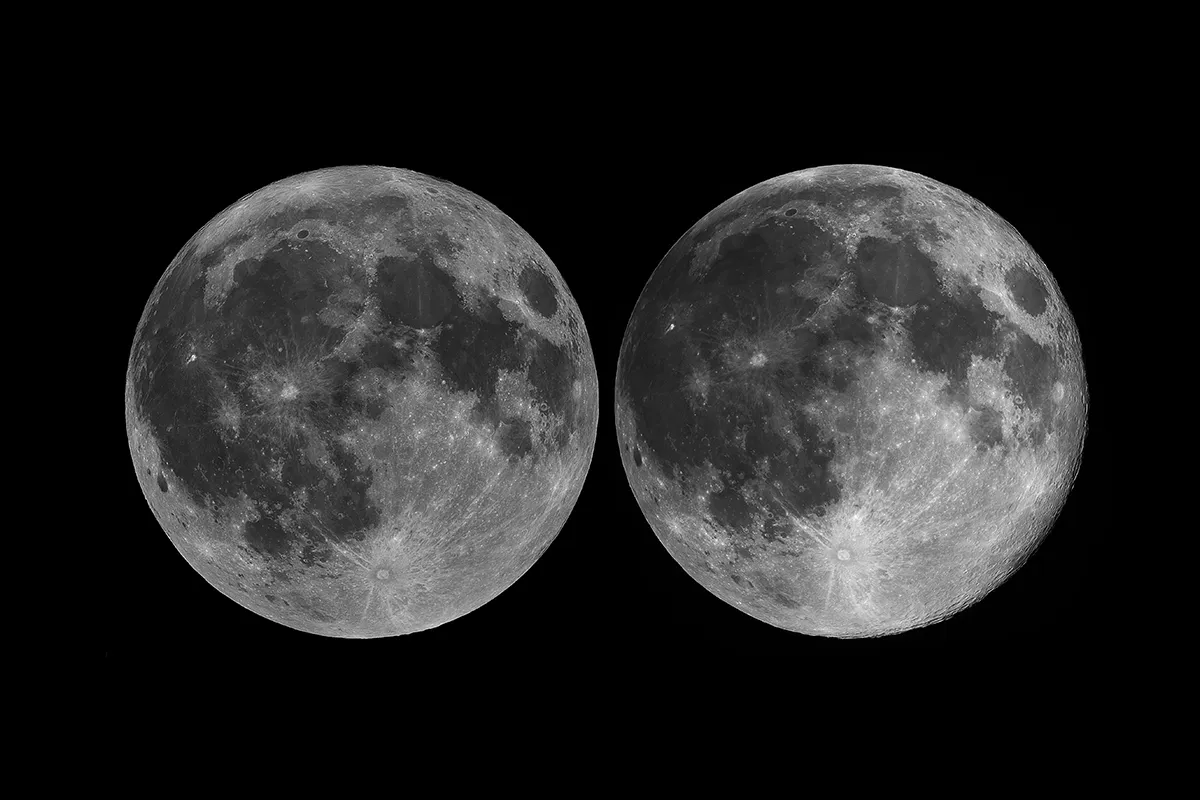The dark side of the Moon is a phrase that’s widespread in common parlance, thanks not least to a certain mega-selling Pink Floyd LP from 1975.
But does the Moon really have a dark side? That depends on what you mean by dark!
If you mean "Does the Moon have one side that is in permanent darkness?" then the answer is no.

While one side of the Moon permanently faces towards Earth and one permanently faces away, both sides receive pretty much equal quantities of sunlight over the course of any given year.
There is no dark side of the Moon because there is no side of the Moon permanently shielded from sunlight.
But “dark” has other meanings.
One of these, per the Merriam-Webster dictionary, is “not known or explored because of remoteness” – which is one reason why the Moon’s far side is often, perhaps misleadingly, called the dark side.
In more recent times, another sense of the word “dark” has emerged.
People who suddenly aren’t available through the normal communications channels can be said to have “gone dark”.
This meaning, too, can be fairly applied to the lunar far side, because the Moon blocks radio signals sent to or from any craft that’s orbiting there.
Perhaps in some sense, you can talk about the 'dark side' of the Moon.
All the same, astronomers – to avoid confusion – talk about the far side of the Moon, rather than the dark side.

Far side of the Moon explained
The reason the Moon has a far side at all, is due to a gravitational phenomenon called 'tidal locking'.
Gravity keeps the Moon at such a distance from Earth that it takes 28 days to orbit our planet.
But 28 days is also how long it takes the Moon to rotate once on its axis, which is why one side of the Moon is always facing Earth and one side is always facing away.
This, by the way, is actually quite a common phenomenon.
Within our own Solar System, Mercury is tidally locked to the Sun, while other tidally locked satellites include, among others, Mars’s moons Phobos and Deimos, Neptune’s moons Proteus and Triton, Pluto’s moon Charon, and too many of Jupiter, Saturn and Uranus’s moons to list here.
Libration

Back to our own Moon, though, and it should be pointed out that the tidal locking described above is not a perfect system.
Slight variations in the Earth-Moon distance cause a phenomenon called lunar libration, an apparent oscillation of the Moon as seen from Earth.
And thanks to libration, some far side regions that lie very close to the terminator (the putative dividing line between the near and far sides) are occasionally visible from Earth.
These include Mare Orientale and Crater Einstein.

Such regions make up around 18% of the lunar far side’s surface area.
The other 82% is forever out of sight – or at least, it was until the first lunar orbiting missions, both Russian and American, in the late 50s and early 60s.
Since then, the whole of the far side has been photographed and mapped by orbiting spacecraft.
More recently two missions have actually touched down there: China’s Chang-e 4 in 2019 and Chang-e 6 in 2024, with NASA’s Artemis III due to follow in 2026.

Why the far side of the Moon is important
Scientists are interested in the far side partly because its topography is quite different from that of the near side, with lots more impact craters and basins, and far fewer smooth, flat mare regions.
And partly because there is growing interest in the idea of eventually constructing a radio telescope there.
That’s because such a telescope would be facing out into space, and be shielded by the Moon’s sheer bulk from any signal interference originating from Earth.
We’ll see if that ever happens… but in the meantime, here’s a fun fact to end on.
As we’ve already said, both sides of the Moon receive a roughly equal amount of direct sunshine per year.
But like all the best stories, that seemingly simply tale contains a couple of twists.
Firstly, the near side of the Moon, unlike the far side, is also exposed to sunlight that’s been reflected off Earth, just as here on Earth we get moonlight that’s really sunlight reflected off the Moon.
In fact, a ‘full Earth’, as seen from the Moon, is 34x brighter than a Full Moon seen from Earth.

But there’s another factor to take into account, which is that the near side of the Moon is regularly occulted, at least in part, by Earth’s shadow.
That’s what we on Earth call a lunar eclipse.
But that doesn’t happen on the far side, of course, because it’s facing away from us.
The end result of all this – when you add up all the hours of direct and/or indirect sunlight exposure, and subtract any time spent in Earth’s shadow – is that, far from being 'dark', the lunar far side actually receives slightly more sunlight in any given year than the near side does.
